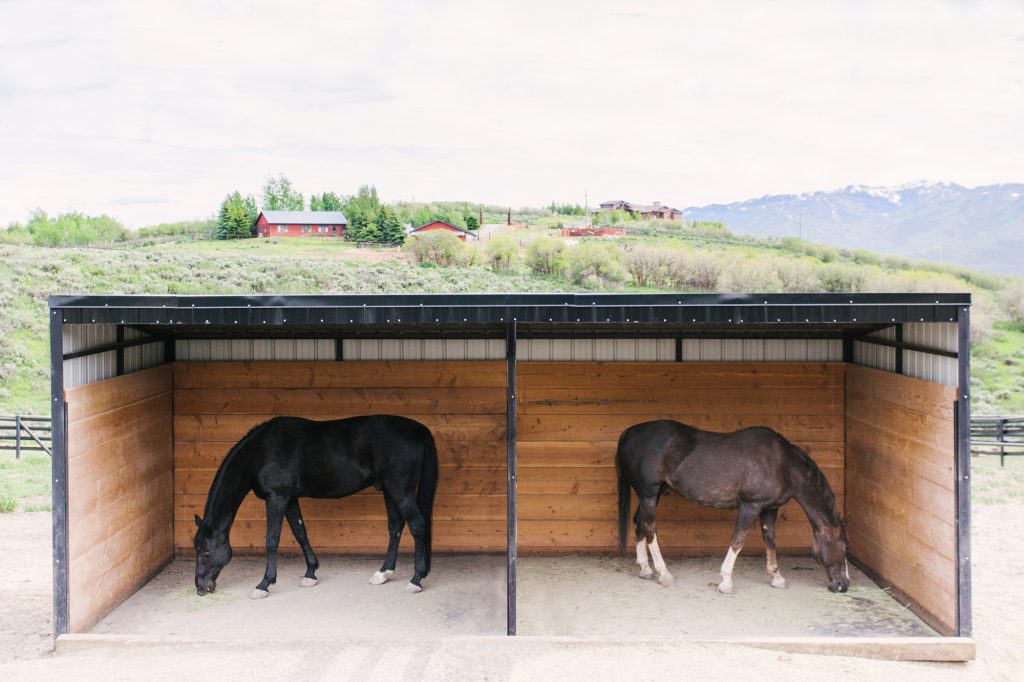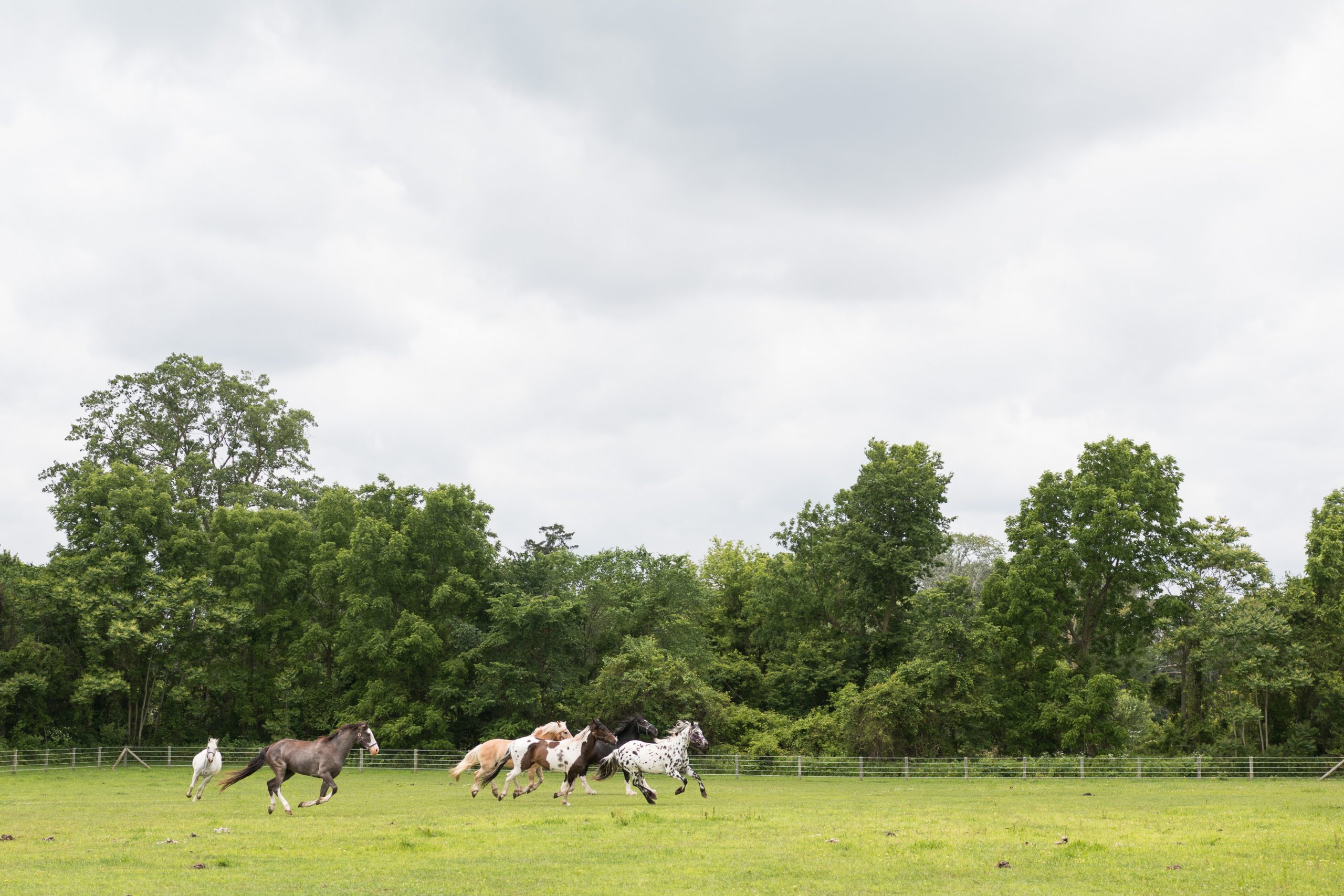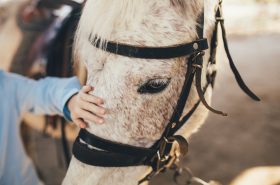Bringing your horses home to your own property after boarding them somewhere else is a dream for many horse owners. Before you make the big move, there are some things to consider to prepare for a smooth transition.
Fencing
If your property is already set up for horses, you may be a step ahead, but there are still things you need to check before loading your horses on the trailer to bring them home. Check all existing fence lines for any damage or any places that could possibly cause injuries to your horses. Repair or replace any sections of the fence you deem unsafe. Walking the entire fence line on both sides of the fence is a great way to make sure you don’t miss anything. If you do, you know your horses will help you find it! Walk your horses around the inside perimeter of the fence to help them learn where it is before turning them out for the first time.
If you don’t have any fencing on your property, RAMM offers a variety of fencing solutions and can help you determine which type of fencing would best suit your needs. My favorite fence is the Flex Fence for its safety, easy installation, and beautiful aesthetic. In the next few years, we will also be adding wire mesh to our existing fence lines to accommodate other smaller animals on our farm.
Shelter
There are many different types of suitable shelters for horses. Take into consideration what type of shelters your horses have at their current facility, what your ideal home scenario would be, and what options you have available on your own property. When we first moved to our farm, we had a 100-year-old barn with no stalls, and there was no fencing on the property. We built custom stalls in the barn and used round pen panels for a versatile fencing solution until we built more permanent fencing. This allowed us to quickly prepare the property to house our two horses while giving us the flexibility to learn the best placement for permanent fencing.
RAMM has a wide selection of horse stalls that can be customized to fit in an existing barn or be the focal point of a newly constructed barn. If your horses are more accustomed to living outside, a three-sided shed may be more than enough to keep your horses comfortable.

Photo provided by Silver Oaks Farm
Mud and Manure Management
One of the biggest challenges horse owners face is managing mud and manure. Boarding barns with a larger number of horses may need to have manure hauled off the property or utilize a large manure spreader. On your own property with just a few horses, you have some different options. A manure pile is the simplest option but it needs to be placed in a location that is not only easy to access but also out of sight so it does not detract from the view out your kitchen window.
Turning the manure pile either by hand with a shovel or with a tractor bucket will help the manure pile break down faster and become composted manure which you can use to fertilize your gardens. Small chain-driven manure spreaders can be pulled by a lawn mower or 4-wheeler to spread picked-up manure or composted manure from your pile over your fields or lawn to fertilize also.
Mud management starts with the smart placement of gates and high-traffic areas. Keeping horses out of low, wet areas in the first place will help reduce mud and erosion on your property. Digging shallow swales can help move excess rainwater swiftly through your pastures so the water doesn’t sit and make the ground soggy. Adding gravel to gates and high-traffic areas will help prevent mud and also helps condition your horses’ hooves. Installing a gravel dry lot area will help save your pastures by giving your horses somewhere to stretch their legs instead of having to stay in their stalls during wet seasons. We installed a gravel dry lot 3 years ago and we still say it’s the #1 best thing we ever did for the horses on our property!
Hay and Bedding
Most boarding barns include hay and bedding in the cost of boarding. When you bring your horses home, sourcing, purchasing, loading, and storing hay and bedding is now your responsibility. If you already have a barn or some sort of storage building on your property, determine how much hay and bedding you can store at one time so you can plan ahead accordingly. Ask your barn manager if you can purchase a few bales of hay to take home to help transition your horses from the boarding barn hay to your own hay if you’re using a different supplier. If you don’t have a truck to pick up your own hay, many hay farmers will work out a delivery arrangement with you.
Bedding can be purchased bagged or in bulk for pick up either on a truck or trailer or delivered by a dump truck. Bulk bedding will be your cheapest option but you will need a good area to store it. A pile covered by a tarp outside the barn can work but I’ll be the first to tell you it isn’t fun to shovel a foot of snow off your frozen tarp to clean stalls!
Bringing your horses home really is a dream come true and I still remember that day myself. There are plenty of challenges with having your horses on your own property but it is so worth it. Plan ahead and try to set things up as efficiently as possible in the beginning but just know you will make many changes to your property and routines over the years as you figure out better ways to do things. Contact the experts at RAMM to discuss your options to set up your property to bring your horses home.

Love this blog post? We think you will like The Pros & Cons of Keeping Backyard Horses and Barnyard Companions for Your Lonely Horse by Emily Fought.




